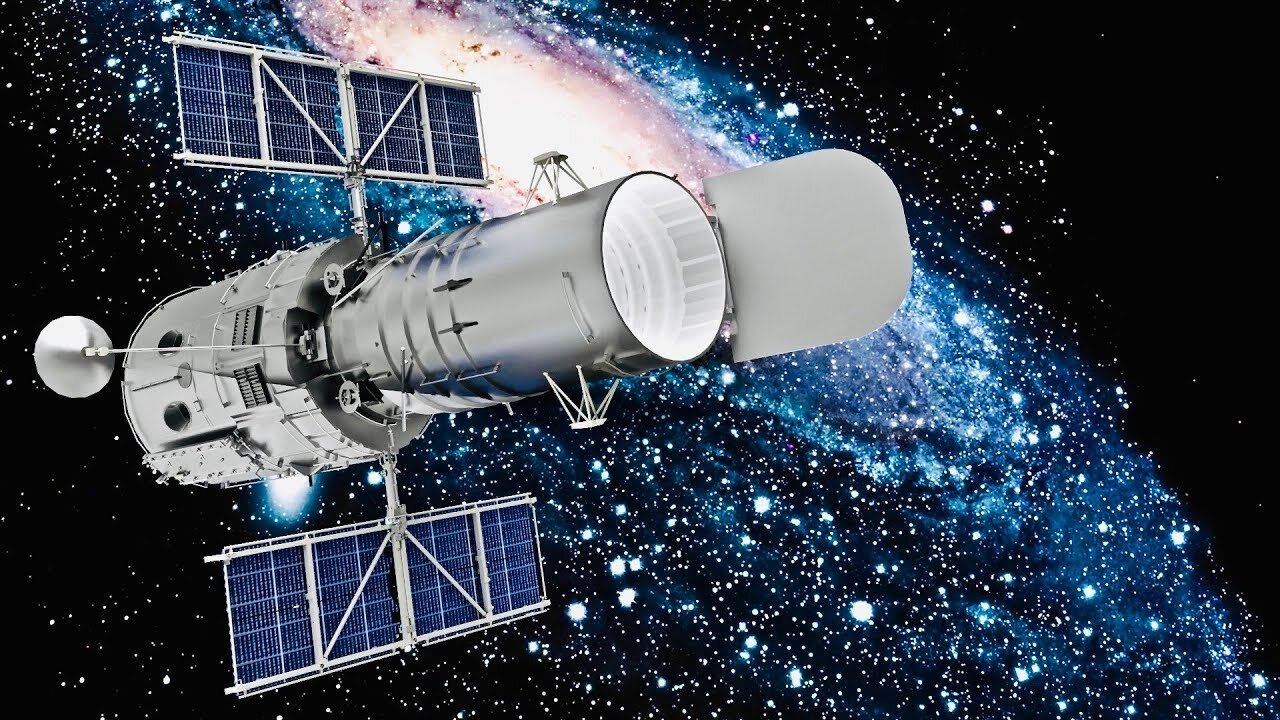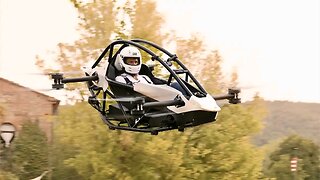Premium Only Content

History of Telescopes - From Galileo To Hubble - Full Documentary
In 1609 an Italian physicist and astronomer named Galileo became the first person to point a telescope skyward. Although that telescope was small and the images fuzzy, Galileo was able to make out mountains and craters on the moon, as well as a ribbon of diffuse light arching across the sky -- which would later be identified as our Milky Way galaxy. After Galileo's and, later, Sir Isaac Newton's time, astronomy flourished as a result of larger and more complex telescopes. With advancing technology, astronomers discovered many faint stars and the calculation of stellar distances. In the 19th century, using a new instrument called a spectroscope, astronomers gathered information about the chemical composition and motions of celestial objects.
Twentieth century astronomers developed bigger and bigger telescopes and, later, specialized instruments that could peer into the distant reaches of space and time. Eventually, enlarging telescopes no longer improved our view… all because of the Earth's atmosphere.
A Telescope in the Sky? Why?
The next time you gaze up at the night sky, you're likely to spot a twinkling star. But is it really twinkling? What looks like a twinkling star to our eyes is actually steady starlight that has been distorted, or bent, by the Earth's atmosphere. The visual effect of this distortion is like looking at an object through a glass of water.
Earth
Telescopes here on the ground -- which also must peer through Earth's atmosphere -- are equally vulnerable to our atmosphere's visual tricks.
That's why astronomers around the world dreamed of having an observatory in space -- a concept first proposed by astronomer Lyman Spitzer in the 1940s. From a position above Earth's atmosphere, a telescope would be able to detect light from stars, galaxies, and other objects in space before that light is absorbed or distorted. Therefore, the view would be a lot sharper than that from even the largest telescope on the ground.
Vision Becomes Reality
In the 1970s the European Space Agency and the National Aeronautics and Space Administration began working together to design and build what would become the Hubble Space Telescope. On April 25, 1990, five astronauts aboard the space shuttle Discovery deployed the eagerly anticipated telescope in an orbit roughly 380 miles (600 km) above the Earth's surface. That deployment and, later, the unprecedented images that Hubble delivered represented the fulfillment of a 50-year dream and more than two decades of dedicated collaboration between scientists, engineers, contractors, and institutions from all over the world.
Hubble's Job Description
Explore the solar system.
Measure the age and size of the universe.
Search for our cosmic roots.
Chart the evolution of the universe.
Unlock the mysteries of galaxies, stars, planets, and life itself.
Beyond Hubble: The Next Generation Space Telescope Next Generation Space Telescope LOGO
Hubble's important mission will come to an end one day in the future. But the telescope's ultimate retirement will not signal the end of our unrivaled view of the universe. Rather, it will mark a new beginning -- and even more amazing discoveries and images from space. For Hubble has a successor. The Next Generation Space Telescope (NGST), which is being designed right now, may be launched as early as 2008.
When that day comes, scientists using NGST hope to discover and understand even more about our fascinating universe, such as
The formation of the first stars and galaxies
The evolution of galaxies and the production of elements by stars
The process of star and planet formation.
Bigger! Better! Colder?
In order to peer back toward the beginning of the universe, NGST will make observations in the visible to the mid-infrared part of the electromagnetic spectrum. NGST is designed to operate in the infrared wavelengths, so it is important to keep the detectors and telescope optics as cold as possible (excess heat from the telescope itself would create unwanted "background noise"). In addition, NGST's larger primary mirror will give it 10 times Hubble's light gathering capability.
-
 3:33
3:33
Knowledge Land
2 months agoYour Personal Electric Aircraft Is Here - Jetson One
42 -
 LIVE
LIVE
Sean Unpaved
1 hour agoColt Knost Unplugged: Golf, 2025 Ryder Cup, & Football Fever
51 watching -
 LIVE
LIVE
Neil McCoy-Ward
1 hour agoIt’s About To Get Ugly Between JD Vance and Macron
83 watching -
 LIVE
LIVE
Total Horse Channel
18 hours ago2025 Gypsy Congress Championship Show | Thursday
41 watching -
 LIVE
LIVE
TheAlecLaceShow
1 hour agoJacob Frey MOCKS Catholics | Annunciation | Guests: Gordon Chang, Jim Pfaff | The Alec Lace Show
82 watching -
 LIVE
LIVE
Viss
1 hour ago🔴LIVE - Stacking Wins is What We Do! - PUBG Tactics 101
107 watching -
 LIVE
LIVE
The Charlie Kirk Show
1 hour agoShould Taylor Swift Submit? + What's Wrong In Minneapolis? + MAHA vs. CDC | 8.28.2025
2,791 watching -
 LIVE
LIVE
Law&Crime
4 hours ago $1.23 earnedLIVE: Adelson Matriarch Murder Trial — FL v. Donna Adelson — Day 5
649 watching -
 LIVE
LIVE
The Mel K Show
1 hour agoMORNINGS WITH MEL K - Refusing the Lie & Standing Firmly for Truth 8-28-25
646 watching -
 LIVE
LIVE
The Shannon Joy Show
2 hours ago🔥🔥BREAKING: FOIA’d Government Docs Reveal American Citizens Might Be Worth More DEAD Than Alive. Exclusive With Sasha Latypova! 🔥🔥
225 watching